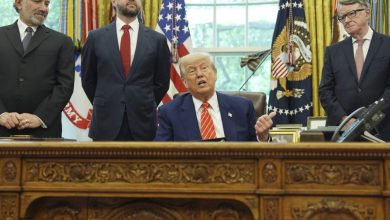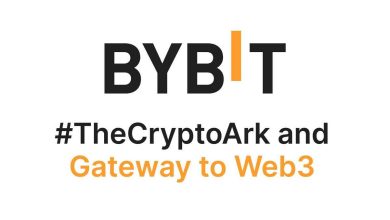A Look Into World Liberty Financial Governance For USD1 Airdrop Proposal


World Liberty Financial (WLFI), a crypto project backed by the Trump family, opened a governance vote on May 6, 2025, to distribute its USD1 stablecoin to eligible WLFI token holders. The airdrop aims to test the platform’s onchain distribution system and reward early supporters. The vote, which closes on May 14, 2025, has received overwhelming support, with 99.97% of votes (approximately 2.6 billion tokens) in favor and only 0.03% (about 901,000 tokens) against, as reported on May 7, 2025.
The exact amount of USD1 to be distributed and the airdrop date are yet to be finalized, depending on eligible wallets and budget. WLFI reserves the right to modify or cancel the airdrop at any time. USD1, launched in March 2025, is a fully backed stablecoin pegged to the US dollar, supported by US Treasuries, cash, and equivalents, and has a market cap exceeding $2 billion, ranking among the top stablecoins.
The World Liberty Financial (WLFI) USD1 airdrop proposal carries significant implications for the project, its token holders, and the broader crypto ecosystem, while also highlighting a divide among stakeholders due to its political ties, governance structure, and economic incentives. The airdrop serves as a live test of WLFI’s onchain distribution system on the Ethereum Mainnet, ensuring smart contract functionality and scalability for future operations.
Register for Tekedia Mini-MBA edition 17 (June 9 – Sept 6, 2025) today for early bird discounts. Do annual for access to Blucera.com.
Tekedia AI in Business Masterclass opens registrations.
Join Tekedia Capital Syndicate and co-invest in great global startups.
Register to become a better CEO or Director with Tekedia CEO & Director Program.
A successful airdrop could enhance confidence in WLFI’s technical infrastructure, positioning it as a reliable DeFi platform. However, any technical failures could undermine trust and delay USD1’s broader rollout. By distributing USD1 to WLFI token holders, the airdrop rewards early adopters, fostering loyalty and encouraging further participation in the ecosystem. This could drive demand for WLFI tokens as new investors seek eligibility, potentially increasing token price, though speculative spikes may introduce volatility.
The governance vote (99.97% in favor as of May 7, 2025) demonstrates strong community support, reinforcing WLFI’s decentralized ethos. However, WLFI’s ability to modify or cancel the airdrop at its discretion may raise concerns about centralized control, potentially alienating some community members. The airdrop aims to boost USD1’s visibility and adoption before its public launch, positioning it as a competitor in the $230 billion stablecoin market dominated by USDT and USDC. With a market cap already exceeding $2 billion, USD1 ranks among the top stablecoins, and the airdrop could further enhance liquidity and market share.
USD1’s zero-fee minting/redemption and institutional backing (e.g., BitGo custody, Fidelity-managed reserves) differentiate it from competitors, potentially attracting retail and institutional users. However, the lack of public reserve attestations and limited liquidity compared to established stablecoins like USDT pose risks to adoption. The Trump family’s involvement (Donald Trump as “chief crypto advocate” and family-linked entity DT Marks DEFI LLC holding 22.5 billion WLFI tokens) has drawn significant scrutiny.
Democratic lawmakers, including Senators Elizabeth Warren and Richard Blumenthal, have raised concerns about conflicts of interest and national security risks, citing potential violations of the foreign emoluments clause. This could lead to stricter regulatory oversight, impacting WLFI’s operations and USD1’s credibility. WLFI’s claim that the Trump family has no operational or ownership role may mitigate some concerns, but the perception of political influence could deter users and investors wary of politically charged projects.
Economic and Market Risks
The airdrop could enhance USD1’s price stability by increasing circulation and liquidity, supported by arbitrage incentives and a diversified reserve (US Treasuries, cash equivalents). However, any mismanagement of reserves or failure to maintain the 1:1 peg could trigger market skepticism, destabilizing USD1 and affecting WLFI token sentiment. Holders receiving USD1 inherit risks tied to stablecoin adoption, including regulatory changes, market volatility, or operational issues, which could impact the perceived value of both USD1 and WLFI tokens.
WLFI’s branding as a “freedom-loving financial ecosystem” resonates with Trump supporters and those aligned with its narrative of economic independence. The airdrop is seen as a symbolic gesture reinforcing these values, appealing to a politically aligned community. The Trump family’s involvement has sparked a heated debate within the crypto community, where neutrality and decentralization are often prized.
Critics, including Democratic lawmakers and some crypto purists, question the project’s transparency and fear it prioritizes political ideology over financial integrity. This divide could limit WLFI’s appeal to a broader, apolitical audience. The airdrop’s structure (amount based on eligible wallets and budget) suggests equal distribution per wallet, but past airdrops often favor larger token holders. Those with significant WLFI holdings may expect greater rewards, potentially creating tension with smaller retail investors if the distribution feels inequitable.
Long-term investors may view the airdrop as a step toward ecosystem growth, while speculators might buy WLFI tokens to qualify, driving short-term price volatility. This could frustrate committed holders if speculative dumps follow the airdrop. The governance vote empowers token holders to shape WLFI’s direction, but WLFI’s ability to unilaterally modify or cancel the airdrop undermines this decentralization. Some community members may feel their votes lack real impact, creating distrust.
The 99.97% approval rate (2.6 billion votes in favor vs. 901,000 against) suggests strong consensus, but the low opposition (0.03%) may reflect apathy or lack of engagement from some holders, highlighting a divide between active governance participants and passive investors. Supporters trust WLFI’s commitment to transparency like the third-party audits, Chainlink’s Proof of Reserves and see the airdrop as a legitimate reward. This divide is exacerbated by WLFI’s rapid growth (raising $550 million from 85,000 holders) and USD1’s meteoric rise, which some see as unsustainable without clearer transparency.
The USD1 airdrop could solidify WLFI’s position in the stablecoin market, enhance community loyalty, and validate its technical infrastructure, but it also faces significant challenges. Political scrutiny, regulatory risks, and potential governance tensions could hinder broader adoption. The divide—between political supporters and critics, large and small holders, active and passive participants, and optimists and skeptics—underscores the polarized reception of WLFI’s initiatives.
The project must navigate these divides by prioritizing transparency, equitable distribution, and regulatory compliance to maintain trust and achieve long-term success. For the latest updates, stakeholders should monitor WLFI’s governance forum and official announcements.






